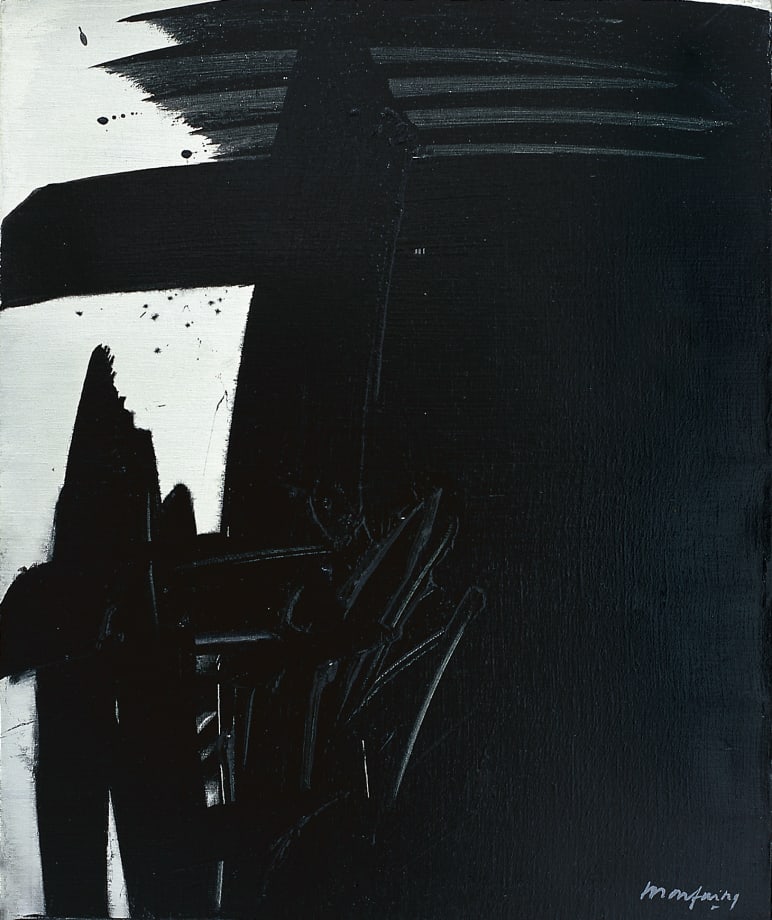Beginning February 14th, Lorenzelli Arte is proud to present Confronto, an exhibition of works by French artists André Marfaing and Jean Dewasne. With over 40 pieces painted by Marfaing between 1966 and 1974, and 10 dated 1959 to 1964 by Dewasne, the exhibition explores the contrast not only between the two artists, but also that which can be found within Marfaing's own use of light and dark.
André Marfaing's work was recently shown in the exhibition Hommage à André Marfaing by Les Abattoirs in Toulouse, the same city in which the artist was born in 1925. At first working as a lawyer, Marfaing moved to Paris in 1949 to devote himself to painting. During the 1950s, he exhibited at the Salon de la Jeune Peinture, the Salon de Mai, and the Salon des Réalités Nouvelles. Then in 1958, his first solo exhibition took place at the Galerie Claude Bernard. Marfaing died in Paris in 1987, after which several exhibitions of his work were organized, including those at the Gallery Ariel and the Gallery Clivages.
Born in Lille, France in 1921, Jean Dewasne began exploring the art of painting at the age of 12. Dewasne continued to develop artistically, studying architecture at Paris' Ecole des Beaux-Arts, and eventually moving towards abstract painting during the 1940s. The Galerie Denise René in Paris was the first to believe in him, hosting exhibitions from 1945 to 1956. In 1946, Dewasne received the Kandinsky Prize, and the following year, was a member of the newly formed Salon des Réalités Nouvelles. In 1961, Dewasne's first exhibition in Italy took place at the Galleria Lorenzelli in Milano. Dewasne's “Antisculptures” shows his further progression towards the abstract, which continued into the 1980s, when he became a member of OuPeinPo. Dewanse died in Paris in 1999.
By exhibiting works by Marfaing and Dewasne in the same space, Confronto allows the viewer to compare two artists who emerging from the same geographical and historical context developed very different styles. While Marfaing focuses on the sharp contrast between hues of white and black, color is of great importance in Dewasne's pieces. Dewasne pays close attention to geometrical forms, while Marfaing employs strong brush strokes that produce less structured images. Emotion and spontaneity seem to play a larger role in the creation of Marfaing's pieces than the neatly constructed and seemingly carefully planned works by Dewasne.
André Marfaing and Jean Dewasne: Comparison
Past exhibition


